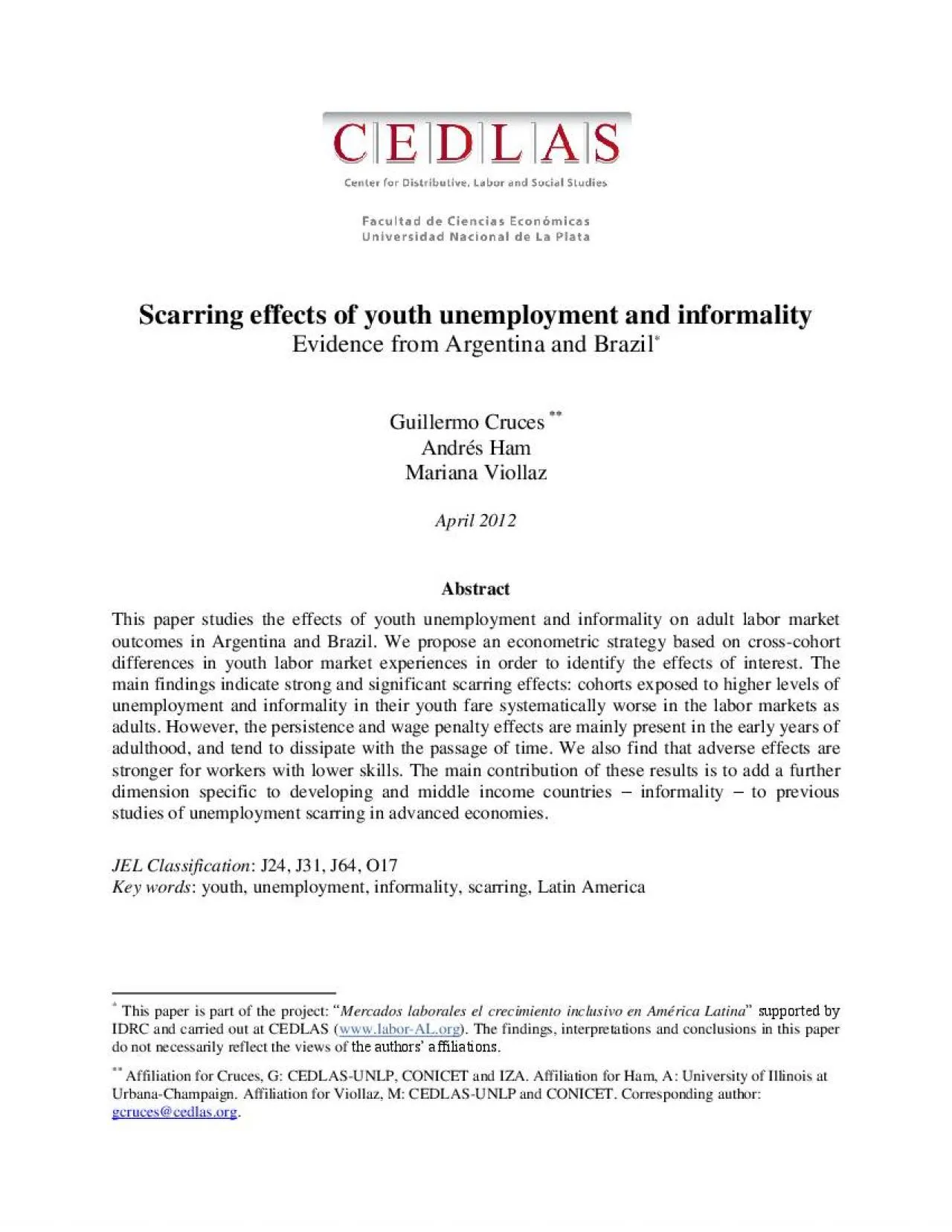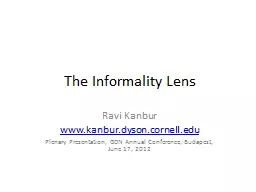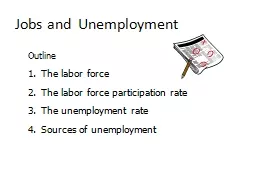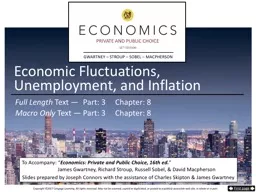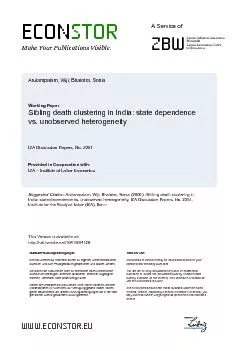PDF-Scarring effects of youth unemployment and informality
Author : lucy | Published Date : 2021-10-07
Evidence from Argentina and BrazilGuillermo CrucesAndrs HamMariana ViollazApril2012AbstractThis paper studies the effectsofyouth unemployment and informality onadult
Presentation Embed Code
Download Presentation
Download Presentation The PPT/PDF document "Scarring effects of youth unemployment a..." is the property of its rightful owner. Permission is granted to download and print the materials on this website for personal, non-commercial use only, and to display it on your personal computer provided you do not modify the materials and that you retain all copyright notices contained in the materials. By downloading content from our website, you accept the terms of this agreement.
Scarring effects of youth unemployment and informality: Transcript
Download Rules Of Document
"Scarring effects of youth unemployment and informality"The content belongs to its owner. You may download and print it for personal use, without modification, and keep all copyright notices. By downloading, you agree to these terms.
Related Documents

